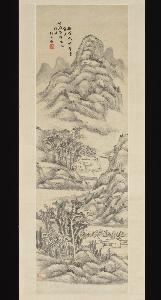Zhang Shanghe
Zhang Shanghe
Place: Shenyang
Born: 1839
Death: 1916
Biography:
Zhang Shanghe (Chinese, 1839–1916) was a Chinese artist known for his landscape paintings. He was born in Shenyang, China in 1839 and died in 1916. He was a prominent artist during the Qing dynasty and his works are highly regarded for their detailed and realistic depictions of the Chinese landscape. He was particularly skilled in the use of ink and color, and his paintings often feature a rich and expressive use of texture and shading. His most famous work is 'Landscape', which is a hanging scroll painting on paper. It is considered to be one of the most renowned works among all Chinese paintings, and it has been called 'China's Mona Lisa.' The painting is considered to be the most famed work of art from the Song dynasty, and it has been revered and copied many times in the following centuries. The original painting is celebrated as the most famed work of art from the Song dynasty, but little is directly known about its painter, who is generally presumed to be Zhang Zeduan, since records were destroyed when the Jin dynasty overthrew the Northern Song dynasty. There is continued debate and research over its creator, the date and location of where it was painted, and the intended meaning of the work. The earliest attribution to Zhang Zeduan is an inscription dated 1186, which was added on the basis of an earlier catalogue by the Jin imperial curator, Zhang Zhu (active late 12th century) to the original scroll. The scroll is 25.5 centimetres (10.0 inches) in height and 5.25 meters (5.74 yards) long. In its length there are 814 humans, 28 boats, 60 animals, 30 buildings, 20 vehicles, 8 sedan chairs, and 170 trees. Only about twenty women appear in the Song dynasty original, and only women of low social rank are visible out of doors unless accompanied by men. The countryside and the densely populated city are the two main sections in the picture, with the river meandering through the entire length. The right section is the rural area of the city. There are crop fields and unhurried rural folk—predominately farmers, goatherds, and pig herders—in bucolic scenery. A country path broadens into a road and joins with the city road. The left half is the urban area, which eventually leads into the city proper with the gates. Many economic activities, such as people loading cargoes onto the boat, shops, and even a tax office, can be seen in this area. People from all walks of life are depicted: peddlers, jugglers, actors, paupers begging, monks asking for alms, fortune tellers and seers, doctors, innkeepers, teachers, millers, metalworkers, carpenters, masons, and official scholars. The painting is considered to be the most renowned work among all Chinese paintings, and it has been called 'China's Mona Lisa.'

